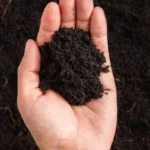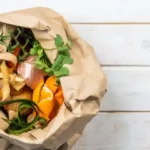If you often use parchment paper when cooking or baking, you might wonder if it’s compostable. Parchment paper is widely used in kitchens, from lining baking trays with a non-stick surface to covering and wrapping food. But is parchment paper compostable, or will it ruin the delicate balance within your composting pile?
Parchment paper is perfectly safe to compost if manufactured using natural processes, but not all are created the same way. For example, brown parchment paper is the most natural and safe to compost, while white parchment paper is often bleached and unsuitable for composting.
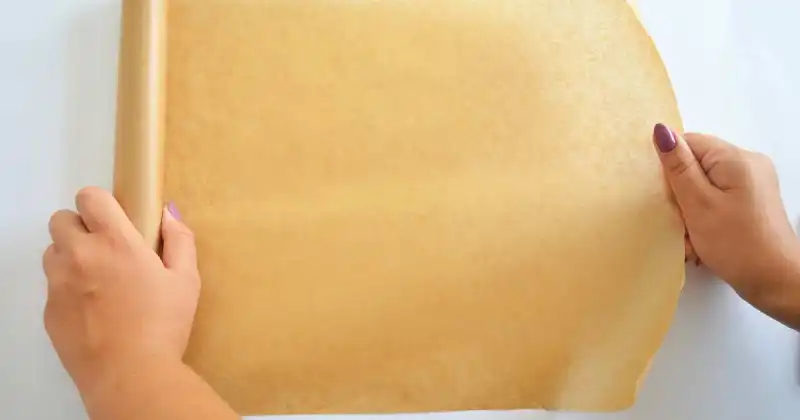
While composting at home is a great way to reduce household waste and create nutrient-rich soil for your garden, not all materials are created equal when decomposing. By understanding the different types of parchment paper, you will better understand its composting benefits and drawbacks.
In this article, we’ll explore the ins and outs of parchment paper within your backyard composting pile, including manufacturing processes, added chemicals, how long it takes to break down, along with other disposal options.
Humble Highlights
- Discover these 6 types of parchment paper, which can be safely and efficiently composted to build your nutrient-dense humus confidently.
- Stop obsessing about whether the parchment paper you use is biodegradable – know for sure with this easy-to-read chart to boost your compost quickly!
- Save time by following this simple three-step plan to naturally and effectively prep your parchment paper for your compost heap so you can reduce household and be a friend to the environment.
What Is Parchment Paper
Regarding parchment paper, there are a few different types to choose from. You may have heard of bleached, unbleached, or even silicone-coated parchment paper. Each type has unique properties and benefits, so it’s worth learning about them before purchasing.

Parchment paper is mostly used for baking because of its heat-resistant properties and provides a non-stick surface, making cleanup easier. By understanding the differences between each type of parchment paper, you can ensure that you choose the best one for your needs, a topic we’ll explore next. 1
Types Of Parchment Paper
Parchment paper is manufactured in many ways, using different processes to obtain a similar result. The chemicals or process used will change the parchment paper’s cost or ability to biodegrade.
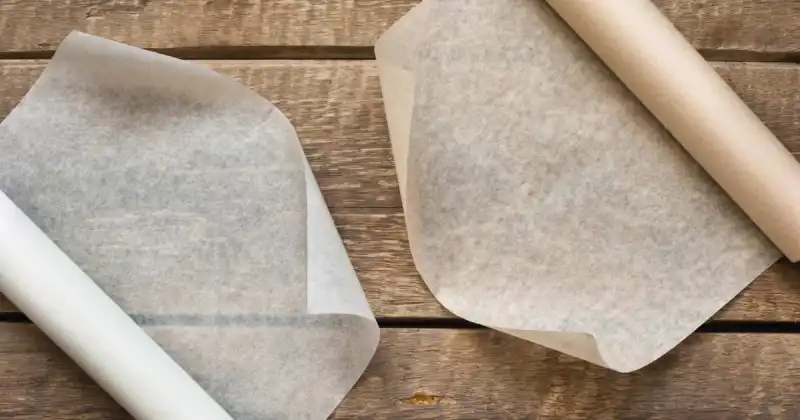
While certain processes make parchment paper cheaper to manufacture, others can make it stronger and more resistant to heat and grease, allowing it to be reused several times. 2
Some of the most common types of parchment paper are:
1. Bleached And Unbleached Parchment Paper. The two main types of parchment paper are either bleached or unbleached. The bleaching process uses chlorine to make the paper white, while unbleached parchment paper is brown.
2. Vegetable Parchment Paper. This type of parchment paper is made by soaking paper in sulfuric acid. The acid breaks down the tiny paper fibers, leaving a translucent and grease-resistant material behind.
3. Silicone-Coated Parchment Paper. Parchment paper is often coated with a layer of silicone. The silicone creates a non-stick, heat-resistant surface that is perfect for baking.
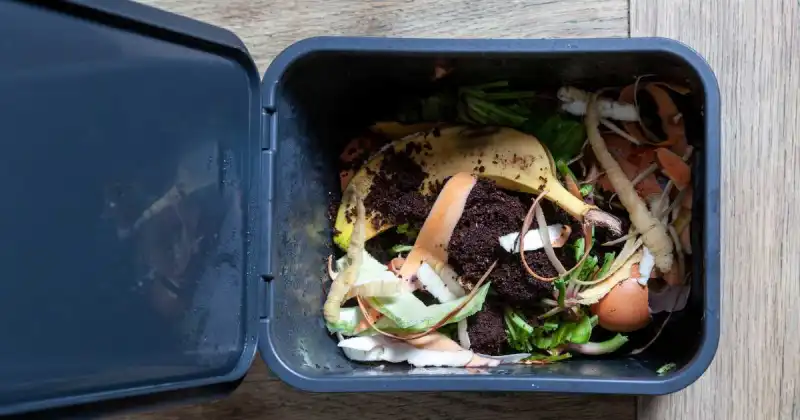
4. Quilon Parchment Paper. This type of parchment paper is made by coating paper with a layer of Quilon, a chemical that causes the paper grease-resistant. Quilon is used as an alternative to silicone.
5. PTFE Parchment Paper. PTFE parchment paper, or Teflon paper, is made by coating paper with a layer of PTFE. PTFE is a synthetic material used to make paper non-stick and heat-resistant. 3
6. Glassine Parchment Paper. Glassine parchment paper is made by pressing paper between two rollers. The intense pressure creates a smooth, glossy finish that is perfect for wrapping food but is not considered food safe when used for baking. Unlike other parchment paper, glassine alternatives cannot withstand high temperatures.
Overall, each type of parchment paper uses a specific process to achieve properties such as non-stick, heat-resistant, or grease-resistant. Each type’s biodegradability and compostability depend on the materials used in the manufacturing process.
Parchment paper can be made using a combination of the methods described above. For example, vegetable parchment paper can be unbleached and silicone coated for added heat resistance.
Remember, generally speaking, unbleached, brown parchment paper and vegetable parchment paper are the most eco-friendly options as they are typically more natural, which makes them biodegradable and compostable.
If eco-friendliness and sustainability are a big concern, you can also opt for recycled parchment paper made from post-consumer waste.
Below is a short video on how culinary-grade, silicone-coated parchment paper is created and processed. Although it suggests the parchment paper is compostable, be aware that the added silicone will take longer to break down fully in your compost tumbler or backyard heap.
Is Parchment Paper Compostable
Although various types of parchment paper are available, not all are suitable for composting, so choosing one that’s eco-friendly and won’t harm the environment is essential. For example, unbleached and unwaxed brown parchment paper is natural and fully compostable, while white, chlorine-bleached parchment paper contains chemicals that can have negative ecological consequences.
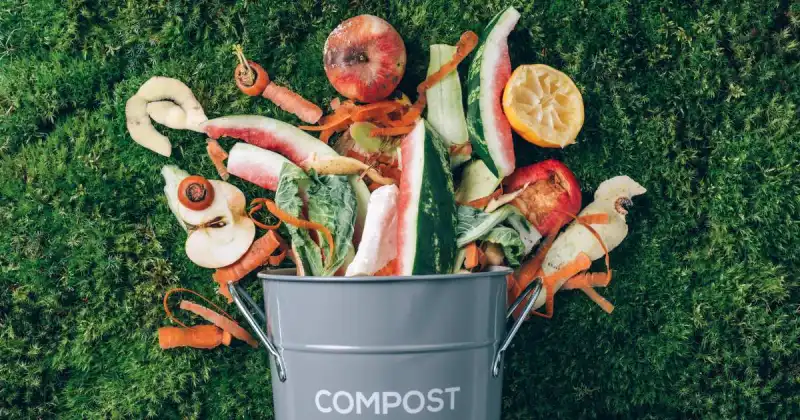
All parchment paper is compostable due to its organic makeup. However, certain additives can reduce their suitability. Chlorine in bleached parchment paper produces dioxins as it gradually decomposes.
Dioxins not only kill the beneficial microbes responsible for the decomposition process, affecting your entire compost pile, but the finished compost (humus) produced from your composted parchment paper will also contain these harmful dioxins, posing a risk to the plants and vegetables when you spread the hums throughout your garden. 4
Further, dioxins are also considered a health risk when they enter the food chain or water supply, so they are best kept away from any growing medium altogether – like your backyard garden.
For further help, use the table below to see which parchment paper is most compostable and which can cause challenges within your compost pile.
| Parchment Paper Type | Compostable Yes/No | Comments |
|---|---|---|
| Bleached Parchment Paper | No | If chlorine chemicals are used in the bleach, they release dioxins which are harmful to your compost pile. |
| Unbleached Parchment Paper | Yes | Provided it contains no other chemicals or contaminants, it remains purely plant-based and is fully compostable. |
| Vegetable Parchment Paper | Yes | Genuine vegetable parchment paper is 100% cellulose, making it recyclable, biodegradable, and fully compostable. |
| Silicone Coated Parchment Paper | No | While the paper itself is plant- based, the added silicone layers are not and can take years to break down through composting. |
| Quilon Parchment Paper | No | Quilon is a cheaper alternative to silicon and contains the heavy metal chromium that can contaminate your compost pile. |
| PTFE (Teflon) Parchment Paper | No | Teflon is added to provide extreme heat resistance and durability and will withstand any composting efforts. |
| Glassine Parchment Paper | No | Glassine is highly resistant to water and grease, so it will not break down easily in a compost pile. |
As you can see, unbleached, brown, and vegetable parchment paper are the most natural, sustainable options and present the best choice for composting since they don’t undergo any processed chemical treatment.
Silicone-coated parchment paper, on the other hand, is not compostable and can take many years to decompose fully. Therefore, it’s best to avoid using it if you’re looking for a compostable option.
While the silicone makes the parchment paper more durable, allowing it to be reused several times in the kitchen, other recycling options are available. For example, most types of parchment paper are vegetable-based, made from renewable resources such as wood pulp or cotton. These papers are compostable and can be recycled as well. 5
Teflon or PTFE-coated parchment paper is more expensive and can withstand high heat. Teflon is also very durable, making it highly recyclable and reusable, but very difficult to break down through backyard composting.
The environmental protection agency keeps it simple by saying you can compost “Shredded paper (non-glossy, not colored) and shredded brown bags.”
Sustainable living tips encourage using compostable materials, and the right parchment paper is one of them. So next time you bake, use biodegradable parchment paper and add it to your compost pile for a more sustainable and eco-friendly lifestyle.
How Long Does Parchment Paper Take To Compost
You may be surprised to learn that the time it takes for parchment paper to break down and enrich your soil is shorter than you think.
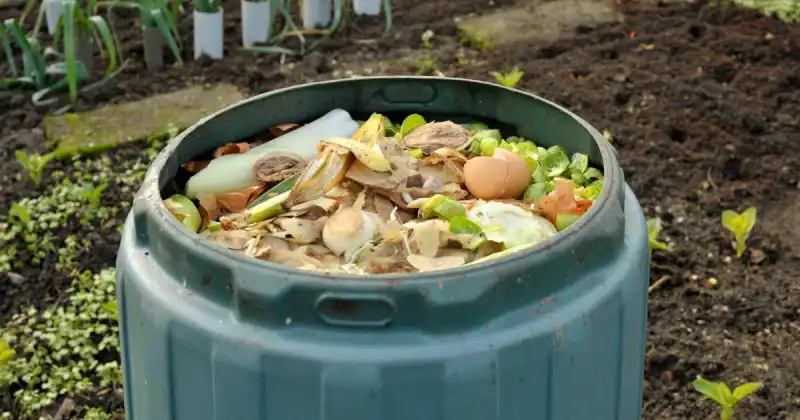
When added to a compost pile, biodegradable parchment paper typically decomposes within 30-90 days. Tearing the parchment paper into small pieces or soaking it in warm water before adding it to your compost pile can help speed up the decomposition process, often in as little as two weeks. 6
Parchment paper is specifically designed to withstand hot temperatures and liquids, two of the most important factors involved in decomposition. Still, there are ways to help increase the decomposition process.
How To Compost Parchment Paper
Now that you are ready to turn your kitchen waste into nutrient-rich soil, here are three easy steps to compost your used baking sheets, including:
- Choosing A Chemical-Free Parchment Paper Option
- Removing Food Debris
- Preparing The Parchment Paper
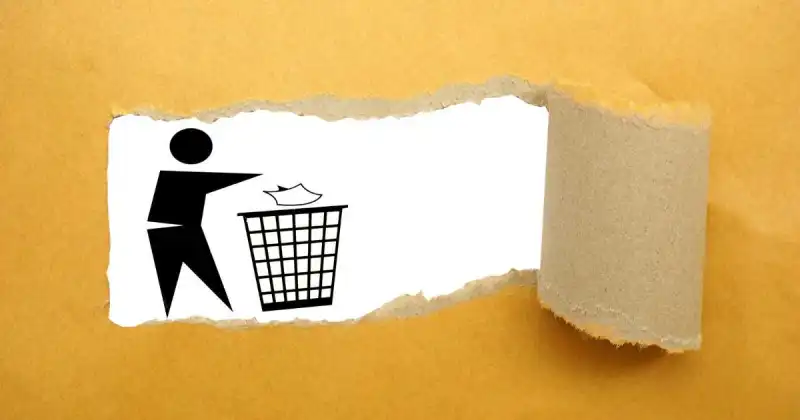
Choose A Chemical-Free Parchment Paper
A healthy compost pile comprises many elements, including a balanced carbon-to-nitrogen ratio, while fostering an environment that invites beneficial microbes and insects that aid in oxygenation and help to break down the waste.
Certain chemicals and additives in your compost pile can contaminate it, making it too harsh for beneficial microbes and insects to thrive. Unfortunately, these harmful chemicals can remain in your finished compost, hindering plant growth and decreasing crop yields. To avoid this unnecessary challenge, steer clear of these toxic substances altogether. 7
When you compost parchment paper, ensure it’s free of toxic chemicals. For the best results, look for packaging that states the parchment paper is compostable or ensure it’s as natural as possible.
Remove Food Debris
If your parchment paper has been used for food wrapping or baking, rinse or cut away caked-on food debris that may attract unwanted pests to your compost pile.
Several edible fares, including meats, dairy, grease, and cooked food, should not be added to your compost. Typically, these foods may splatter or burn onto your parchment paper, which you must address before tossing the used paper into your compost.
Prepare The Parchment Paper
Before composting your parchment paper, there are a few steps you can take to help it break down quicker. Even the most natural parchment paper has been manufactured to resist heat, grease, and moisture, making it robust. Still, there are a few simple tips that can help.
- Tear or shred the parchment paper into small pieces. A large sheet of baking paper will break down much slower than many small pieces.
- Soak your shredded parchment paper in warm water for 15-30 minutes. Composting occurs in warm moist conditions, so pre-soaking your parchment paper before tossing it into your compost heap helps break down its resistance to moisture.
- Add some nitrogen-rich materials to your compost. As previously mentioned, it’s important to balance carbon-rich materials (like parchment paper) and nitrogen-rich materials (like fruit and vegetable scraps) to ensure that your composting process is efficient.
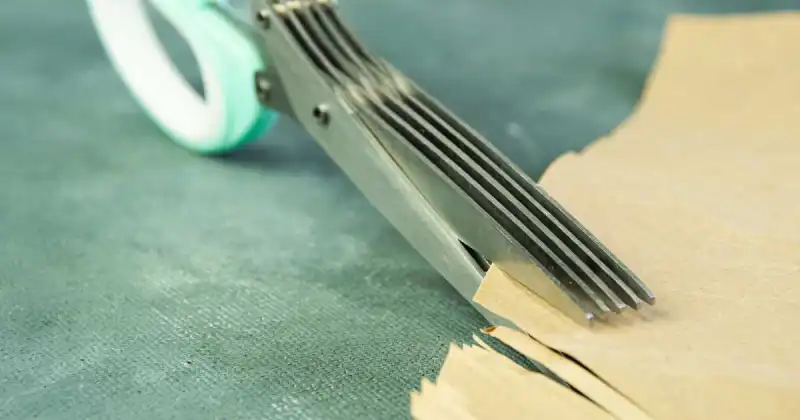
Parchment paper is a great addition to any compost pile as it is an excellent carbon (brown) source that helps break down other organic materials. The result should be a soft, nutrient-rich compost that benefits any garden.
Other Ways To Dispose Of Parchment Paper
Now that you know how to compost parchment paper, you should consider other ways to dispose of it. While composting is a great option, the type of parchment paper you use may not be best for your backyard heap. Fortunately, there are several alternative methods to choose from.
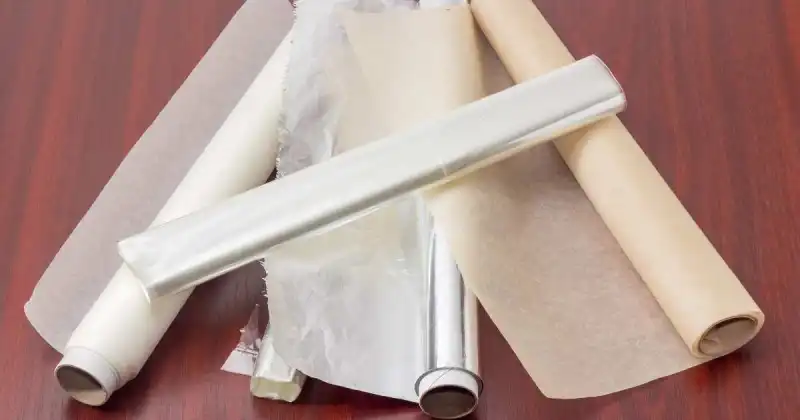
Firstly, if your parchment paper is not heavily soiled, you can reuse it several times before disposing. Rinse it with warm soapy water and allow it to dry naturally. This simple action reduces waste and saves you money in the long run.
Reusing parchment paper is also a great solution if you are using the more expensive silicone or Teflon-coated varieties, as they are more resistant to wear over time. 8
If reusing your paper isn’t a viable option, here are some other eco-friendly ways to dispose of parchment paper:
- Look for biodegradable parchment paper that can be added to your recycled waste.
- Consider repurposing it for art and other fun kiddie projects.
- Burn it. While parchment paper is resistant to heat, it will burn when exposed to a naked flame. If you have an open fire at home, like a fire pit, using parchment paper is an excellent alternative to firelighters.
You can positively impact the environment by being mindful of your parchment paper usage and disposal methods. Consider these options before automatically throwing your paper away and help reduce the amount of waste in landfills.
Alternatives To Parchment Paper
If you’re looking for a more sustainable alternative to parchment paper in the kitchen, consider using silicone baking mats. These mats are popular among professional bakers and home cooks because they’re reusable and withstand high temperatures.

Silicone mats are made from food-grade silicone, a non-toxic material that won’t release harmful chemicals into your food. Plus, they eliminate the need for parchment paper, which means less waste in your kitchen.
Another alternative to parchment paper is reusable wraps. These wraps are made from unbleached paper and can be used to wrap sandwiches, cover bowls, and store food. They’re a great option for reducing waste in your kitchen because they can be washed and reused. 9
Silicone lids and beeswax sheets are additional alternatives that can cover bowls and wrap food. These options are also reusable and can eliminate the need for ubiquitous rolls of aluminum foil or plastic wrap.
Conclusion
Home gardeners can rejoice knowing parchment paper is compostable, but it does come with a few caveats. While parchment paper is made from natural materials, it has often been exposed to chemical treatments or has a silicone coating, making it unsuitable or difficult to compost.
Therefore, naturally manufactured parchment paper is the optimal choice for backyard composting. It breaks down quickly when shredded into small pieces and incorporated into a compost bin and other organic materials.
Additionally, composting parchment paper can reduce our overall waste while positively impacting the environment. So, next time you’re baking or cooking, reach for compostable parchment paper. Remember, as a humble gardener, it’s the small changes that can make the biggest difference, both in your garden and your surrounding landscape.
Do you successfully compost your parchment paper? Take a moment now and drop us a comment below telling your fellow growers what paper option you toss in your backyard compost!
SOURCES
- National Library Of Medicine, National Center For Biotechnology Information – An Overview Of Paper And Paper Based Food Packaging Materials: Health Safety And Environmental Concerns
- SanDiegoCounty.gov – Food-Soiled Paper
- Wikipedia – Polytetrafluoroethylene
- MDPI – Sustainable And Bio-Based Food Packaging: A Review On Past And Current Design Innovations
- North Carolina State University, Extension – Composting
- United States Environmental Protection Agency, Emerging Issues In Food Waste Management – Persistent Chemical Contaminants
- Longmontcolorado.gov – Waste Wizard, Parchment Paper
- ACS Publications – Managing Plastic Waste – Sorting, Recycling, Disposal, And Product Redesign
- Wikipedia – Silicone

